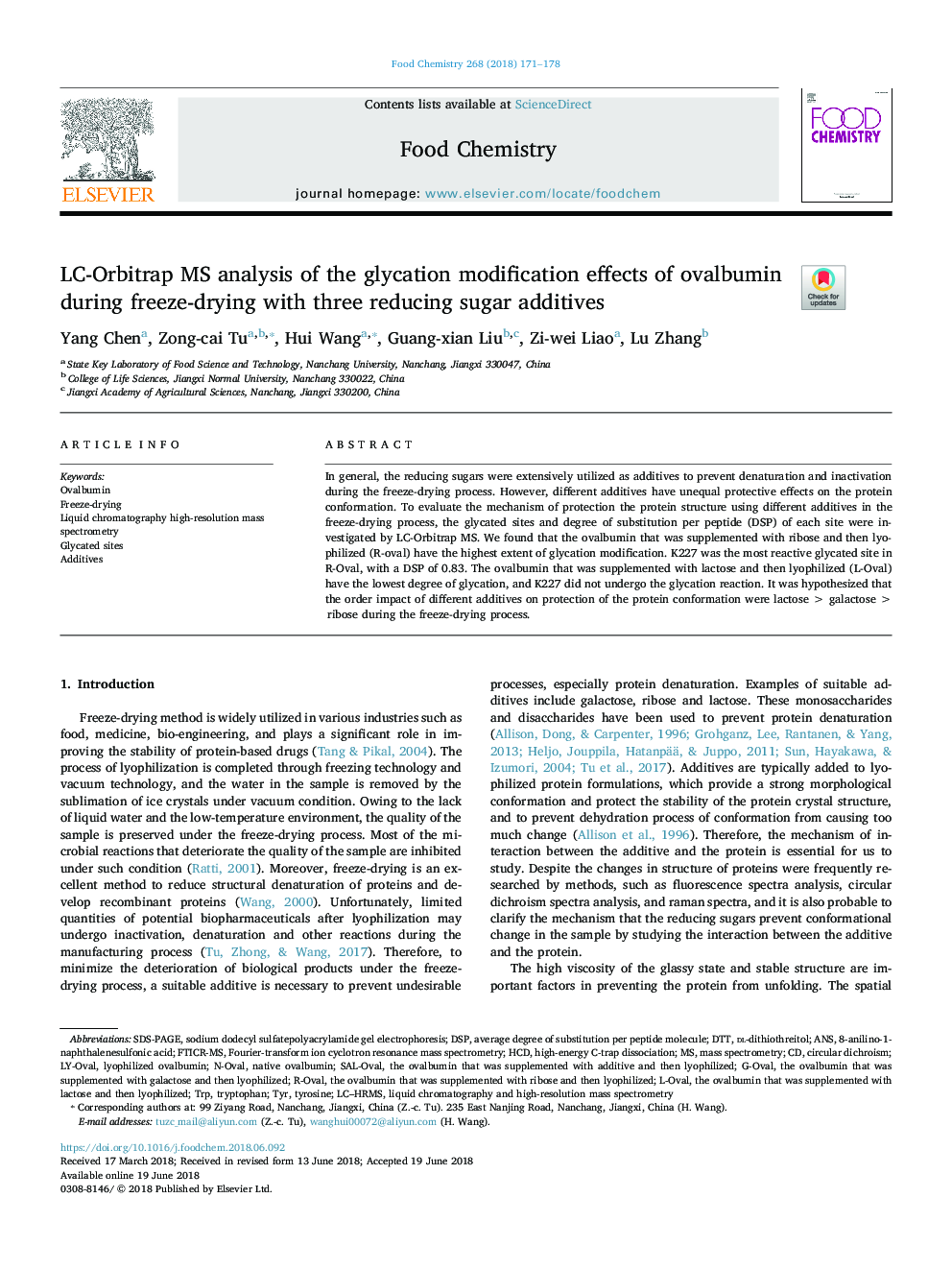| Article ID | Journal | Published Year | Pages | File Type |
|---|---|---|---|---|
| 7584267 | Food Chemistry | 2018 | 8 Pages |
Abstract
In general, the reducing sugars were extensively utilized as additives to prevent denaturation and inactivation during the freeze-drying process. However, different additives have unequal protective effects on the protein conformation. To evaluate the mechanism of protection the protein structure using different additives in the freeze-drying process, the glycated sites and degree of substitution per peptide (DSP) of each site were investigated by LC-Orbitrap MS. We found that the ovalbumin that was supplemented with ribose and then lyophilized (R-oval) have the highest extent of glycation modification. K227 was the most reactive glycated site in R-Oval, with a DSP of 0.83. The ovalbumin that was supplemented with lactose and then lyophilized (L-Oval) have the lowest degree of glycation, and K227 did not undergo the glycation reaction. It was hypothesized that the order impact of different additives on protection of the protein conformation were lactoseâ¯>â¯galactoseâ¯>â¯ribose during the freeze-drying process.
Keywords
native ovalbuminFTICR-MS8-anilino-1-naphthalenesulfonic aciddl-dithiothreitolHCDDSPDTTTrpLC–HRMSAdditivesSodium dodecyl sulfatepolyacrylamide gel electrophoresisSDS-PAGEOvalbuminTryptophanTyrTyrosineFreeze-Dryingcircular dichroismANSMass spectrometryFourier-transform ion cyclotron resonance mass spectrometry
Related Topics
Physical Sciences and Engineering
Chemistry
Analytical Chemistry
Authors
Yang Chen, Zong-cai Tu, Hui Wang, Guang-xian Liu, Zi-wei Liao, Lu Zhang,
